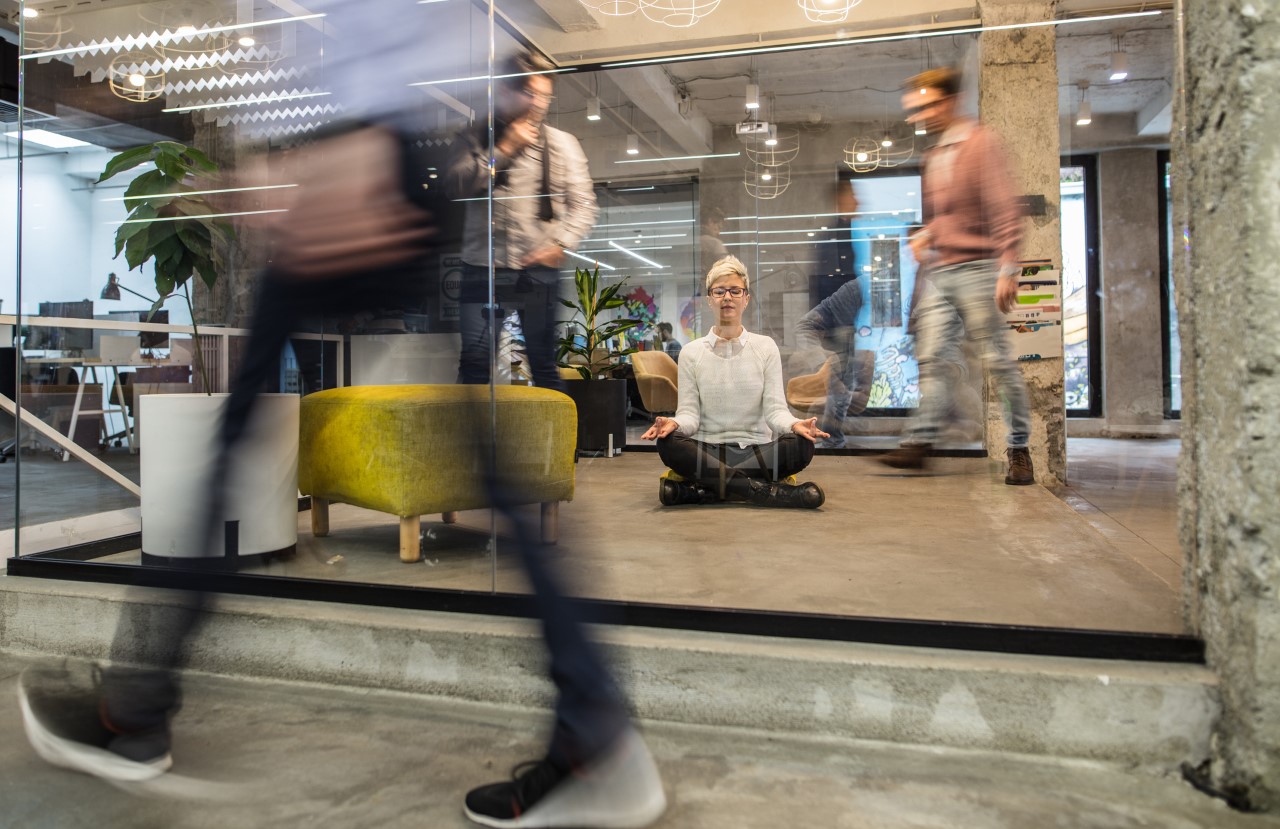Mental health awareness is perhaps at an all-time high as we have had to navigate the many life changes we made in response to COVID-19. With this awareness, how it impacts our companies, and how we can all better support ourselves, and each other, I asked my friend, Phil Dixon, to weigh in. The founder and CEO of the Oxford Brain Institute, Phil has more than 30 years of experience in teaching leaders and managers ‘soft skills’ ranging from visioning and strategic planning to one-on-one coaching and conflict resolution. He has worked with some of the world’s largest companies including Apple, Facebook, Google, Twitter, Yahoo! and Stanford Graduate School of Business. We are grateful that he has taken the time to share some insight with us for Perspectives Matter. -Jim Stuart
WHAT IS MENTAL HEALTH?
There is no agreed upon definition as to what we mean by “mental health.” The World Health Organization (WHO) defines it as “a state of well-being in which the individual realizes his or her own abilities, can cope with the normal stresses of life, can work productively and fruitfully, and is able to make a contribution to his or her community.”
There is an equally useful description of emotional health on FamilyDoctor.org
“Emotional health is an important part of overall health. People who are emotionally healthy are in control of their thoughts, feelings, and behaviors. They are able to cope with life’s challenges. They can keep problems in perspective and bounce back from setbacks. They feel good about themselves and have good relationships.
“Being emotionally healthy does not mean you are happy all the time. It means you are aware of your emotions. You can deal with them, whether they are positive or negative. Emotionally healthy people still feel stress, anger, and sadness. But they know how to manage their negative feelings. They can tell when a problem is more than they can handle on their own. They also know when to seek help from their doctor.
Recent research has shown that good mental health is strongly linked to and integrated with good health in other health dimensions such as physical health and spiritual health. For example, if we look at the following “usual suspects” that enhance physical health, it turns out that they also enhance mental health.
- Physical activity – includes strength, flexibility, and endurance
- Nutrition and diet – includes nutrient intake, fluid intake, and healthy digestion
- Alcohol and drugs – includes the abstinence from or reduced consumption of these substances
- Medical self-care – includes addressing minor ailments or injuries and seeking emergency care as necessary
- Rest and sleep – includes periodic rest and relaxation, along with high quality sleep
In addition, aspects that increase spiritual health also increase mental health.
There is no one-size-fits-all approach in terms of attaining mental health; each of us is different in what we require to keep mentally healthy. Perhaps the most important part is knowing yourself, what makes you tick, what triggers you and what causes you stress, both socially and at work. Once you understand those things, you can tailor your own approach to mental health and stress management.
MENTAL HEALTH, STRESS AND SLEEP
It might also be useful to take a moment to review why it is important to understand mental health and stress management. Let’s just take two aspects: stress and sleep.
First, stress. It’s long been known that chronic stress does bad things to our bodies. More recently, we have discovered that it also does bad things to our brains. Our brains have about 86 billion neurons, each of them connected to tens of thousands of other neurons. Think of it like the Internet in your head.
One way of measuring brain health is to look at the length of those neurons and the number of connections they have with other neurons. Stress impacts three important areas of the brain:
- The pre-frontal cortex is the center of all its executive functions; for example, rational thinking, prioritizing, empathy and self-control
- The hippocampus is the center of memory and learning
- The amygdala is the focus of our response to stress – it’s like a sentry on duty constantly monitoring for threats in our environment
Under chronic stress – typically defined as two weeks or more of continual stress – we can measure that the length of the neurons in the pre-frontal cortex and the hippocampus shrinks and their number of connections is reduced. This means that executive functioning and memory and learning are reduced in their effectiveness. Not something that we really want to have happen to us. On the other hand, under stress the length and the connections of the neurons in the amygdala increase. It’s as if this sentry has taken another ten shots of expresso in order to become even more vigilant. That means we become even more susceptible to stress when we have already been stressed for a long while.
The good news is that, if we take the stress away, the pre-frontal cortex and the hippocampus tend to go back to normal. The bad news is that the amygdala doesn’t. It stays at that increased level of alertness.
So. The bottom line? Find a way of managing your stress before it has its effects.
Now let’s take a brief look at the effect of sleep. Lack of sleep has a direct impact on us, the very next day. Those three parts of the brain that we talked about above are all affected. We tend to be slower at decision making, become more irrational, have less empathy with others, can’t remember as much and are generally more lethargic. Chronic lack of sleep exacerbates all of these issues and more. In addition, there are longer term issues associated with chronic lack of sleep – it appears that there is a greater chance of overall cognitive decline and an increased chance of dementia.
What’s the right amount of sleep? There are two schools of thought. One, is that we all need approximately 8 hours. The other is that it is different for all of us and can range from 4 or 5 to as much as 10. In general, research shows that most of us don’t get enough. And the “I’ll catch up at the weekend” approach still causes damage.
So. The bottom line? Understand your own need for sleep and arrange regular routines so that you get the right amount for you.
It also turns out that, not surprisingly, there’s a mutual impact between stress and sleep. If we are stressed, it is often more difficult to sleep, and if we have had a bad night’s sleep, things stress us more. As luck would have it, there is a way to break out of that cycle. Research shows that if you focus on positivity and maintaining a positive attitude, it is easier to sleep and to manage stress.
PROTECTION, PARTICIPATION AND PREDICTION TO COMBAT THREATS
One last comment about the brain and stress. Our brains are driven by threats. To be more precise, they are driven by threats and rewards. Why that is, is a longer story. Suffice it to say, at this point, that there are a lot of things that cause the brain to perceive threats and what threatens one person’s brain doesn’t necessarily threaten that of another person. At least, not to the same degree. Some people have a high need to work with other people, yet others don’t have the same need. Some people deal with change much more easily than others. Some people are worried about exactly what is going to happen next, and others just let what happens roll over them. We are all different in what makes our brains feel threatened.
For the people who need to work with others, sending them home to work in isolation puts their brain under a major threat. For the people who don’t deal well with change, changing the way that they work puts their brain under major threat. For people who need to know what is going to happen next, dealing with any level of uncertainty, ambiguity or doubt puts their brains under major threat.
Experts have identified nearly fifty dynamics that cause one or more of us to feel threatened. These fifty can be divided into three ‘buckets.’
The first bucket is our need to feel protected. We want to know that we are safe. We want to feel physically safe, emotionally safe and financially safe. We want to be treated fairly. We want to know where we stand.
The second bucket is our need for participation. We are social animals and, to a large degree, we enjoy interaction with other people. We want to know that we are accepted into, and approved by, our group – especially a group of people who are important to us. We want to know that our voice is heard, and our opinions are taken into account. And we want to avoid looking stupid in front of our family, friends and peers.
The third of the buckets is prediction. Our brains want to know what is going to happen next. We want to have some sense of control over our lives. We want to know what is expected of us. We want to know what is going on.
Any given dynamic can cause our brains to respond to perceived threats. Let’s take the example of being sent home to work in self-isolation. To some people that is a direct threat to their brain. They like being around people and feel uneasy when they are not. In addition, it is a change. Once again, to some people that is also a threat to their brain. What about the person whot really needs to know what’s going on, and gets their information from water-cooler talk? Again, their brains are likely to feel very threatened.
So, just the act of having people work from home, can put some people into a heightened threat state.
Now let’s pile on yet more things. Let’s add the concept that there is a virus that has the potential of being a real danger to all of us. Once again, for people with a high need to know what is going on, the uncertainty or not knowing can put their brains into a threat state.
Now let’s add in a resultant economic threat.
If you take all of these threats or potential threats and add them together … well, that’s what’s going on in our brains as we work at home and listen or read about COVID-19.

WHAT CAN WE DO?
We can start by recognizing that our brains are reacting exactly the way they were designed to: to detect danger and respond to it. If we can dig a little deeper and understand what it is that causes us personally to feel threatened, that helps. We are not all the same and what helps one person, might not help another. Understanding the specifics of what threatens you, is another good step to managing your own stress.
When our brains feel threatened, they don’t tend to behave logically. We tend to have more fear and worst-case based responses and less rational ones.
It is quite common for people, especially at this time of the year, to make resolutions to do something different, and very often they are associated with the “usual suspects” that we mentioned earlier. It is also beneficial, however, to take a look at other things that might stretch our brains. To that end I have enclosed a list of activities that have been shown to have a positive impact on our brain.

Phil Dixon




